#Bats of South-east Asia
Explore tagged Tumblr posts
Text
What a Skrungle

#Hairless bat#Bats of Asia#Bats of South-east Asia#bat of the day#Daily bat#Alien thing#Batposting#bat#bats#cute bats#cute animals#look at this creature#I love them#what an entity
260 notes
·
View notes
Text

Bat Week 2020: A Celebration of Bats in Asia-Pacific Cultures Art by Reimena Yee.
(Bigger image from here for more readable text. The background colouring is a little too bright though)
Text on the map under the cut.
You may have heard the soft flutter of bat wings at dusk, noticed them flitting around at night, or even seen them sleeping under roof eaves, in trees and caves during the day. But apart from these brief encounters, have you ever wondered how bats may have traditionally held deeper symbolic meaning in various cultures?
This visual map guide celebrates the many positive bat symbols and folklore found across the Asia-Pacific region. Our ancestors recognised the importance and wonder of bats!
Look out for our full write-up and get updates by following rimba.ngo!
Project Pteropus, a project under RIMBA.
India
In India, Hindu devotees of the goddess Kali worship and protect flying foxes which roost in sacred groves. Bats also feature as symbols of love in Tamil Sangam poetry, dating back more than 2000 years!
China / Taiwan / Chinese culture
A tale from ancient China: The gods took pity on Zhong Kui when he committed suicide. They named him King of Ghosts and tasked him to discipline demons, with bats acting as his helpers who scout out demons for him to vanquish.
In Chinese opera, the Zhong Kui character wears a bat motif on his mask.
The Five Blessings (五福 wŭfú) in Chinese culture are health, wealth, longevity, love of virtue and peaceful death. They are represented symbolically by five bats (五蝠 wŭfú).
In traditional Chinese culture, bats are lucky symbols because the word for bat (蝠 fú) sounds like the word for blessing (福 fú).
Lucky bat motifs can be found on traditional ceramics, jewellery and textiles in Chinese, Peranakan and other Chinese-influenced communities across East and Southeast Asia.
Vietnam
Locals believe that flying foxes roosting in the Wat Mahatup temple grounds in Vietnam are calling forth blessings from Buddha when they circle the temple during their fly-out every evening.
Malaysia / Indonesia
The indigenous Mah Meri in Peninsular Malaysia perform a traditional dance called 'kuang kuwait', mimicking the graceful movements of flying foxes.
The 'siku keluang' a choreography step in the traditional Malay Zapin dance represents humility and restraint - inspired by the flying fox wrapping up its mighty wings' strength when not in flight.
The 'siku keluang', meaning flying fox elbow in the Malay language, is a zigzag, chevron or herringbone motif used in Malay and Javanese traditional textiles and pottery.
According to a traditional Iban belief from Sarawak, Malaysian Borneo, bats act as shamanic messengers to the upper-world during the Gawai harvest festival.
The indigenous Iban in Sarawak traditionally featured the flying fox, locally known as 'semawa', as a tattoo motif.
Papua New Guinea / Western New Guinea
In Bowi folklore of Papua New Guinea, Kinjinmbunduo was a mythical giant flying fox female spirit who left thunderstorms and strong winds in her wake, striking terror and awe but also replenishing the river basin with fruit trees by dispersing seeds during her nocturnal visits.
In New Guinea and Papua New Guinea, the indigenous Asmat and Trobriand carved out flying fox motifs on their war shields to represent triumphant head-hunters.
Samoa
Flying foxes are perceived as protectors and saviours in Samoan folklore. According to legend, Samoan Princess Leutogi befriended and warned flying foxes about the king's hunting plans. In return, the bats rescued her from being burned alive and also brought her food when she was stranded on an inhospitable island. She later bestowed the name "Tonumaipe'a" on her son, meaning "rescued by flying foxes".
For Samoan men, the pe'a—the local name for flying fox is a coming-of-age tattoo that extends From the waist to the knee, symbolising protection over a warrior.
The Samoan war god Sepo took the form of a flying fox to guide his people in battle. If they saw a flying fox ahead, it meant victory would be theirs; if it flew back towards them it was a warning to retreat.
Australia
Flying foxes were important animals to the Aboriginal people of Cape York, Australia, and a common feature in their prehistoric rock art.
Folklore of the Aboriginal Wik in Australia tells of two brothers who broke taboo by spearing and cooking flying foxes. The bats escaped and carried the boys up into the sky as punishment, leaving them there to serve as a grim reminder now immortalised in the Gemini constellation!
Link to open access article of the research:
#bat#bats#asia pacific#south east asia#asia#folklore#culture#cultures of the world#asian culture#chinese culture#tradition#indigenous#indigenous culture#bat week#chiroptera#mammal#animal#bats of asia#india#china#taiwan#vietnam#malaysia#indonesia#papua new guinea#new guinea#samoa#australia#partially described#bat info
3 notes
·
View notes
Text
An hour after sunrise and all trails had been dead ends. Well, all but one.
Superman and The Flash had regrouped outside of Amity Park, both reporting their lack of findings. No one was thrilled and frustrations were only heightened. Constantine and Zatanna had reported much the same, though they only increased their efforts to find the ghosts.
Cyborg was looking into Amity Park's Mayor, but he wasn't expected to have any results for another ten minutes at the soonest. Robin and his team didn't have any headway on the Missing Person's case.
Everyone was anxious.
Batman's first course of action was to send The Flash and Superman out again, though he wanted Kid Flash and Impulse to go with Flash while Superboy went with Superman. That would leave Robin, Wonder Girl, and Red Huntress in Amity Park. They'd have to make due.
"Flash, take Kid Flash and Impulse and to another run of the country. Superman, you and Superboy are gonna search everywhere else again. Be meticulous."
The Flash groaned, crumpling up the empty wrapper he now held in his hand before stashing it in Batman's utility belt. "We were meticulous before," he said. He was quick the call both of the speedsters before running off to start again, going from Washington State and moving East.
Superman was quick to do the same, though he didn't like the idea of working with Superboy, he'd do so for the sake of the world. The feeling was mutual. Superman started his search in Asia while Superboy started in South America.
Batman quietly wished he had his bike with him to make the trip faster, but he didn't complain as he walked the few miles to Amity Park. Robin and his team hadn't been able to get to the Fenton Portal, as he was now calling it, so he was going to get there himself. Hopefully, Cyborg will have information about the Mayor ready for him so that he can hit two bats with one stone.
***
Barry was even more meticulous as he ran back across the USA. He had taken Alaska, the Western and Southwestern States; Wally was checking the Midwestern and Southern States; and Bart was in the Mid Atlantic and New England States.
He didn't know their time limit, but he knew there was one. They all knew it, they just didn't know what it was.
Turning over every stone he could find in the West and Alaska took up the entire first half of the day. There was so much empty space everywhere, but the cities were packed tightly together and overflowing. It wa hard to find any one specific thing, especially while trying not to tip off civilians about the crisis.
He had yet to see any ghosts anywhere. He'd even spend some time in places that were rumored to be haunted, but those all seemed baren of anything other than dust. Though, there were signs of something having been there recently, but no signs of anything being there currently. It freaked him out.
High Noon was an ironic time to end up in the Southwestern United States.
If Barry thought the West was full of space, the Southwest had it topped by barrels. Cities were far apart, but closely packed with people. The space between cities was dotted with towns and ranches an animals. He decided to needed a very detailed map of the US because this was just ridiculous.
Again, Barry took time to check places that were supposed to house ghosts, but they all came up empty. Every ghost town was very lacking in ghosts! If he hadn't seen swarms of them- hell, if he didn't occasionally work with a ghost, he'd think he was wasting his time. As it was, however, the haunts he was visiting were so much more eerie now that he knew they were empty when they weren't supposed to be.
His mind wandered back to what Deadman had said. The US Government had taken a child. A ghost child, but a child all the same. They'd been operating under the nose of the Justice League for who knows how long! And they were only just nowhearing about it.
It made him feel horrible.
Not for the first time, he wondered how people could be so cruel.
Anything could be happening to that ghost child and they'd have no clue about it until they found him. Hell, if Deadman hadn't brought it to the JLD, who brought it to the JL, then none of them would've had a clue at all!
It made him sick.
Focus! He needs to focus on the task at hand. He can dwell later when the kid is safe with his people- safe away from the government that hurt him.
Had the kid been a US Citizen before he died? Probably, right? It would make sense. Phantom - that was his name, right? - had probably been a citizen of Amity Park before he died. How long had he been dead? How had he died? Who would be careless enough to let a child die? Had it been an accident? Had it been on purpose? If so, who could be heartless enough to murder a child in cold blood?
Barry isn't religious, not like some of the other heroes, but he knows that most religions view children as pure; incapable of committing wrongs. Hell, almost everyone in the world holds those same views! So how could someone, in clear conscious, hurt a child in any way?
His eyes blurred slightly at the thought.
Focus, Barry! You need to focus!
He forced his mind to stop wandering, not allowing himself to stray anymore from his objective. He was almost to the border of Texas and Louisiana. He'd double back as many times as it took to find Phantom.
The sun set over Illinois, USA.
Tick Tock...
Part 5 Part 7
#Time Loop: Ghosts of the Present and Future#part 6#dcxdp#dc x dp#dcu#danny phantom#writing#my writing#justice league#justice league dark
348 notes
·
View notes
Text
December 21st, 2023
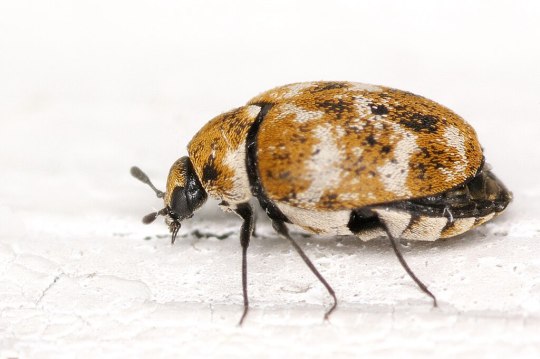
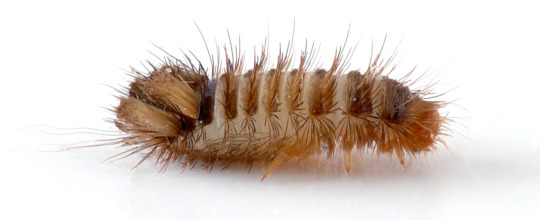
Varied Carpet Beetle (Anthrenus verbasci)
Distribution: Cosmopolitan; found throughout North America and Europe, as well as the Near East, North Africa, South America and northern and eastern Asia.
Habitat: Most commonly found on flowers, as well as plant and animal-based materials; common indoors, in houses, flour mills, warehouses and attics, as well as under siding, and in bat roosts and bird nests.
Diet: Larvae feed on natural fibres, such as keratin and chitin, including dead animals and insects, animal hair, feathers, natural fibres like silk, wool, leather and cotton, carpet fibres, linens, napkins, curtains and other household items, as well as stored food. Adults feed on the pollen and nectar from flowering plants.
Description: While they are pretty in their adult form, varied carpet beetles are serious pests inside homes, universities and museums. Their caterpillar-like larvae have been known to decimate biological collections belonging to museums and universities, and due to their extremely varied diet, they're known to wind up fairly frequently inside houses.
The varied carpet beetle was the first insect studied for its circannual cycle, with environmental conditions controlling larval development, which may last up to two years. Temperature seems to be the most limiting factor to larval development, but relative humidity and food availability may also play important roles.
Images by Jean-Raphaël Guillaumin (adult) and André Karwath (larva)
86 notes
·
View notes
Text
Moth of the Week
Dew Moth
Setina irrorella

Photo credit
The dew moth is a part of the family Erebidae. It was first described in 1758 by Carl Linnaeus. It is thought to have gotten its common name from how the moth hangs from a blade of grass or a leaf when resting during the day. This gives it a transparent look.
Description This species’s wings can vary in colour from cream to yellow. The forewing has 3 lines of black dots across it with the hindwing usually having only one black dot. The underside of the forewing is gray with a yellow margin. The body is black with yellow or black legs.
There are many found variations of this moth:
signata Borkh. - the middle rows of spots are connected by streaks
ab. fumosa Sandb. - has brownish ground colour; found in the north, but also found in Germany.
flavicans Bdv. - has brighter deep yellow wings and the apex of the abdomen is yellow; found in the Mediterranean and Anterior Asia.
nickerli Rebel - paler yellow, the forewing slightly dulled with the exception of the clearer yellow inner margin; found in the Alps and Northern Europe.
andereggi H.-Schiff. - has dark veins on the forewings, appearing like rays; found in the high Alps, and in the higher North.
riffelensis Fall. - considerably smaller, the ground colour is slightly dulled, the black vein-streaks are more numerous, especially the costa and median veins strongly sooty black; found in the high Alps, especially abundant above Zermatt.
lata Christ. - larger with broader wings and paler with very few markings, the hindwing often quite without markings; found in Russia over North Siberia to Kamtschatka.
insignata Stgr., - quite similar to the preceding, but with narrower wings. The forewing also with very few dots, and hindwing without any; found in East Siberia.
Wingspan Range: 27 – 33 mm (≈1.06 - 1.30 in)
Forewing Range: 11 – 18 mm (≈0.43 - 0.71 in)
Diet and Habitat The larva of this moth eat only lichen.
This moth is found in the Palearctic region. Its range starts from Ireland, then spreads south through Europe and east to northern and Central Asia. It can be found in countries such as Siberia, Kamchatka, Chukotka, and northern Mongolia. This species can even live in the limestone Alps up to 2,000 meters above sea level. However, it can not be found in the high north and parts of the Mediterranean region.
It prefers to live in mossy and lichen-covered rock corridors, on chalky and sandy areas and steep, rocky sparse grasslands, rocky coasts, shingle beaches, and calcareous grassland inland. It can also be found in bogs, forest meadows, and on heaths.
Mating Depending on location, this moth can be seen from May to July. It presumably mates during this time. Generations per year not listed.
Predators Not listed. However, the adult males fly in the afternoon, at dusk, after dark, and at dawn. The females are largely nocturnal. These moths are presumably preyed on by nighttime predators such as bats.
Fun Fact The dew moth has four subspecies:
Setina irrorella irrorella
Setina irrorella freyeri (Nickerl, 1845)
Setina irrorella insignata (Staudinger, 1881)
Setina irrorella mediterranea (Daniel, 1964)
Additionally, dew moth caterpillars do not cocoon in trees or foliage but rather in between stones or rocks.
(Source: Wikipedia, Butterfly Conservation)
#libraryofmoths#animals#bugs#facts#insects#moth#lepidoptera#mothoftheweek#Setina irrorella#dew moth#Erebidae
81 notes
·
View notes
Text
Flying foxes

Basics
Bats make up the taxonomic order Chiroptera. They are traditionally categorized into two groups. There are small micro bats (Microchiroptera) and MUCH larger mega bats (Megachiroptera). Only Micro bats have the ability to use echolocation! Mega bats do not, they actually rely on eyesight and smell to navigate!
Flying foxes or more formally Pteropus is a Genus of megabats which are some of the largest bats in the world! They are often referred to as “fruit bats” or “flying foxes.” I will be referring to them as flying foxes. They can reach a wing span of 5 feet. There are currently 60 extant(living) species of flying foxes! They inhabit, Southeast Asia, South Asia, Australia, East Africa and some islands in the Pacific and Indian Ocean. Most flying foxes are nocturnal. Unlike the majority of other bats, flying foxes don’t rely on echolocation to find food! They rely on their keen sense of sight and smell. They fly 9 to 40 miles every night to hunt. When feeding they spit out seeds, enabling plant growth!
Eye sight
As I previously mentioned, flying foxes cant echolocate so they rely on their sense of smell and their sight to hunt! They have really cool eye features/adaptations that enables them to see so well at night! (even better than us!)
Eyesight 101
Every animal has 2 types of cells in their eyes that allow them to see. We have rods, which help us see in low light and detect fast moving objects. They are concentrated in the outer areas of the retina and give us peripheral vision. Rods are 500 to 1,000 times more sensitive to light than cones. The second cells are cones, which allow us to tell the difference between colors and see more detail. There are 3 different cones, which allow us to see red, green, and blue wavelengths of visible light. Since we have all 3 they allow us to see the full color spectrum ( trichromatic vision ).
(Back to flying foxes) Flying foxes don’t have the type of cone to see red wavelengths. This also happens to humans! It’s the same condition that causes us to become red-green colorblind. Everything will appear in a blue or yellow tone. Flying foxes have around 10 times less cones than people, therefore they see less colors. To make up for the lack of cones, they’ve adapted even more rods. This gives flying foxes better low-light vision than people. It allows them to navigate very well at night by using roads, rivers and streetlights.
Chiropterophily
Chiropterophily is the pollination of plants and flowers by bats. More than 500 species of tropical plants are pollinated by nectar+pollen eating bats. There is evidence that trees in the Myrtacaea family have co-evolved with nocturnal foragers and use them to keep genetic diversity over wide ranges. These trees flower and produce nectar at night, and they have bright colored blooms that are easy for flying foxes to locate. Without flying foxes, it would be harder for these trees to maintain genetic diversity over long distances.
Habitat
Flying foxes live in tropical forests, wetlands and swamps. They need to live in large trees as their colonies consist of hundreds to thousands of bats! They live in paperback forests, eucalypt forests, and rainforests.
Diet
Flying foxes are herbivores and frugivores. They thrive off a diverse diet consisting mostly of fruits, leaves, pollen, and nectar. They prefer tropical fruits like bananas, mangoes as well as berries and figs. Flying foxes also consume leaves from a variety of trees and shrubs, and collect pollen from flowers. By feeding on these resources flying foxes aide in the pollination and seed dispersal in their ecosystems. This makes them a keystone species!
Here’s a source that can give you more insight on their eyesight: https://sydneybats.org.au/wp-content/uploads/2015/04/Flying-foxes_are_very_visible_visual_bats_M_Graydon.pdf
That’s all, I hope you learned something new!!
Ps: The image I used is an Indian flying fox
13 notes
·
View notes
Text
So Minecraft has new wolves!!
I am very happy about this, but it does make me curious what species each variation is based off of! You too? Awesome!

Rusty Wolf = Dhole
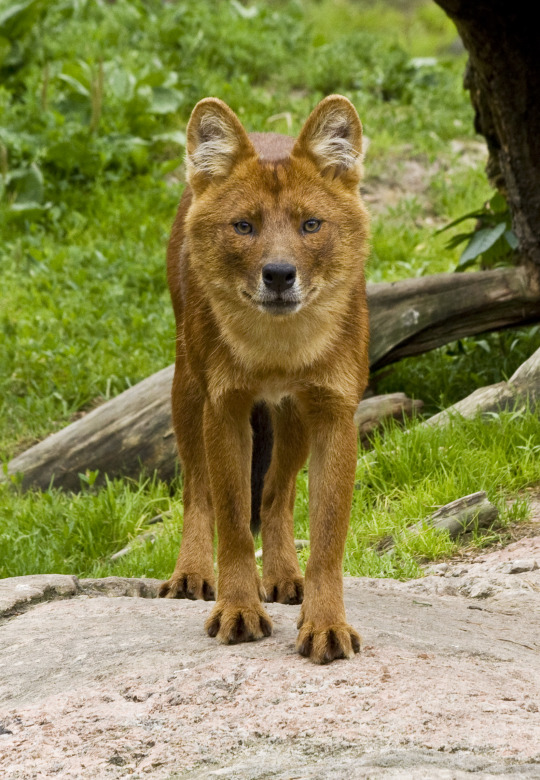
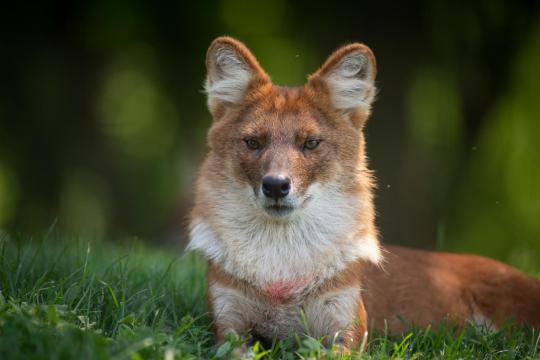
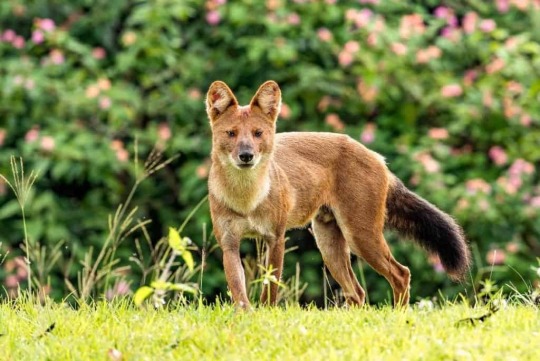
Seeing a little red jungle wolf took me right back to reading The Jungle Book as a kid, so I pretty much instantly decided they were dholes! A.k.a. Asian wild dogs or red dogs. They're an endangered canid native to Central, South, East and Southeast Asia, and they live in large clans ranging from 12-40 members.
Pale (Original) Wolf & Black Wolf = Grey Wolves
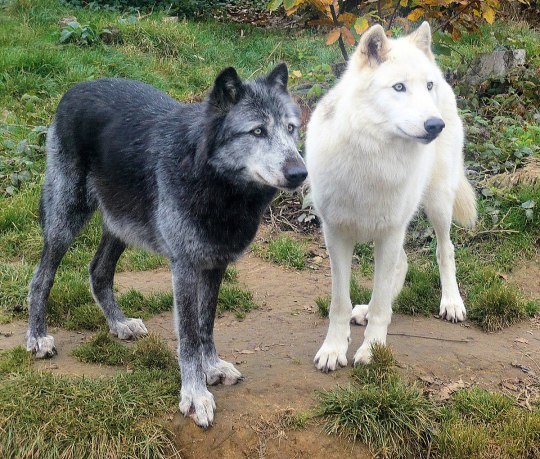
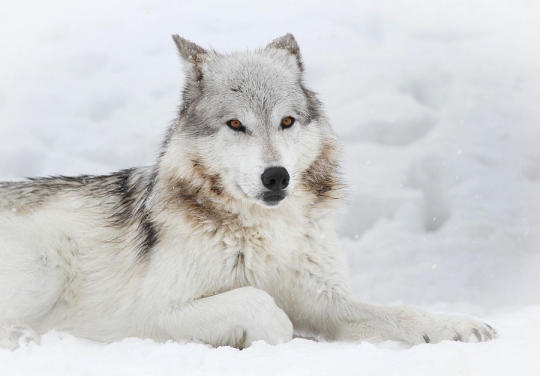
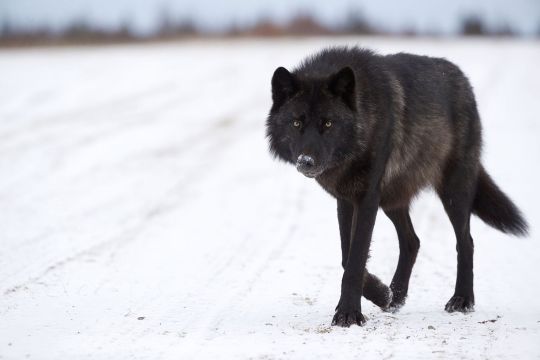
Our familiar friends have probably always been North American grey wolves, just pales ones! Despite their name, this iconic member of the canid family has an incredible amount of variation, and different subspecies of them are scattered all over North America.
Striped Wolf = Aardwolf
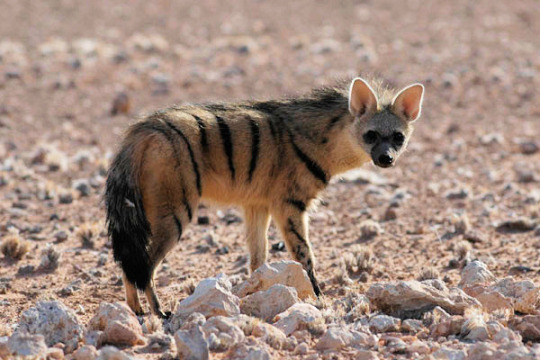
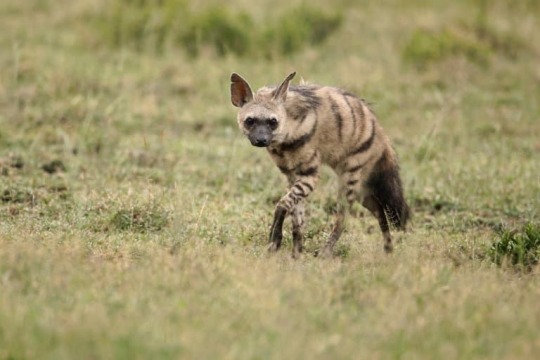
Okay, this is interesting, because they are definitely aardwolves! However, despite their names, aardwolves are actually the tiniest member of the hyaenidae family! Native to East and Southern Africa, they are exclusively insectivores and are known for following aardvarks to use their vacated burrows and foraging grounds. I think it's fascinating that a hyena was chosen for the wolf skins!
Snowy Wolf = Arctic Wolf
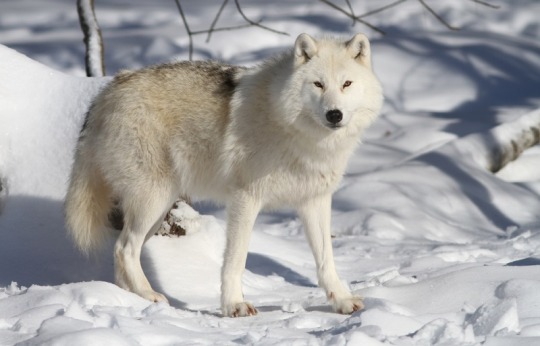
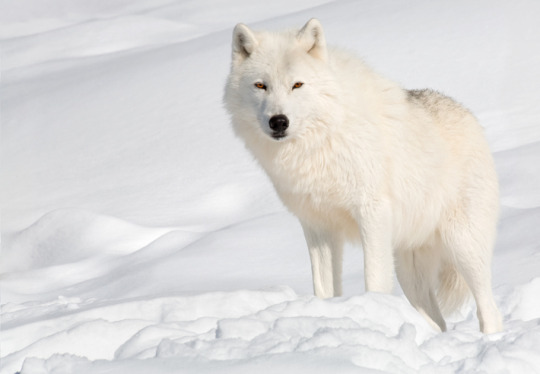
One of the many subspecies of gray wolves, arctic wolves are native to the Canadian Arctic and Alaska. Thanks to their territory being generally undesirable to humans, they are the only subspecies that can found across the entirety of their original range. Arctic wolves seem the most logical choice for snowy wolves, through there are several other pale-coated northern subspecies they could technically be.
Ashen Wolf = Northwestern Wolf

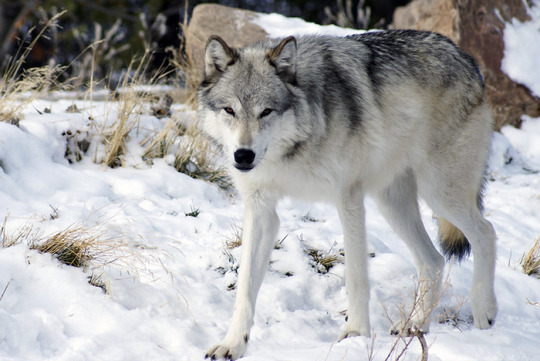
Speaking of northern subspecies, let's have some fun with the ashen variant. I'm pinning them as the Northwestern wolf, a.k.a. the Mackenzie Valley wolf! Native to, well, the northwestern part of Canada and Alaska, they are arguably the largest subspecies of wolf we know of. They match up pretty well with their Minecraft counterparts both in terms of habitat and possible coloration!
Woods Wolf = Eastern Wolf
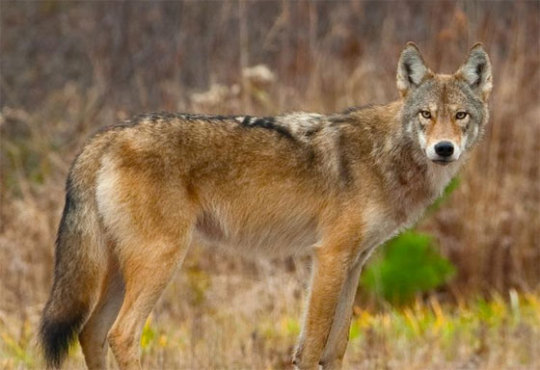
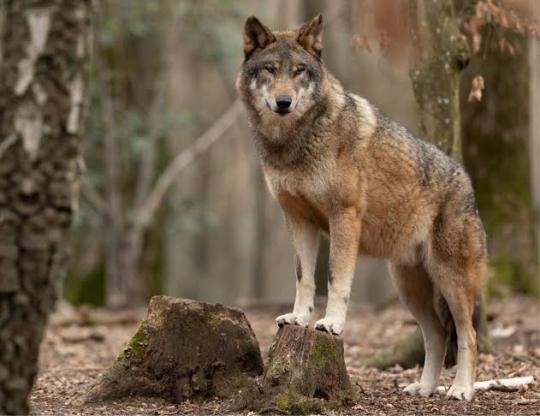
Ooo, okay, I went down a rabbit hole with this one! Eastern wolves, a.k.a Great Lakes wolves or Algonquin wolves, are native to the Great Lakes region of North America. They exist in an identification limbo, with no current ruling on whether they are a subspecies of grey wolf, red wolf, or their own unique branch that drifts closer to coyotes on the canid family tree. There is even some debate on whether the Great Lakes and Algonquin variants should be counted as the same subspecies, which I think is fascinating!
Spotted Wolf = African Wild Dog

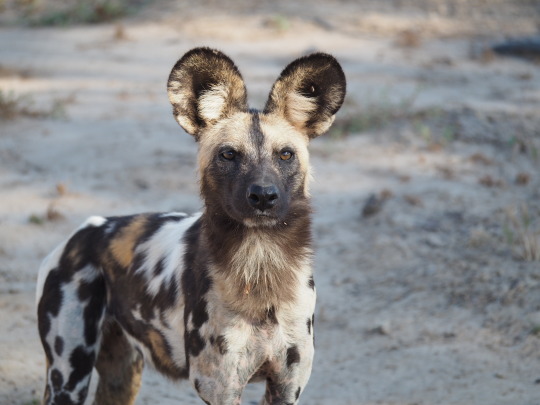
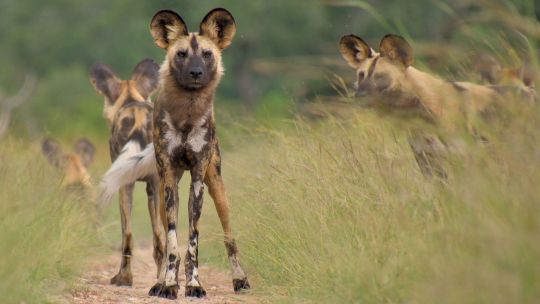
The more people who know these good bois exists, the happier I am. African wild dogs, a.k.a. painted dogs or Cape hunting dogs, are the largest wild canine in Africa. They live in packs of 5-30 members and are known their cooperative hunting tactics, using stamina to wear down prey. They're highly social animals, and you'll never find a lone dog.
Chestnut Wolf = Bat Eared Fox
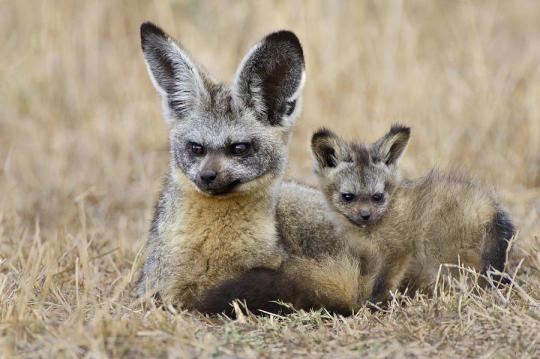
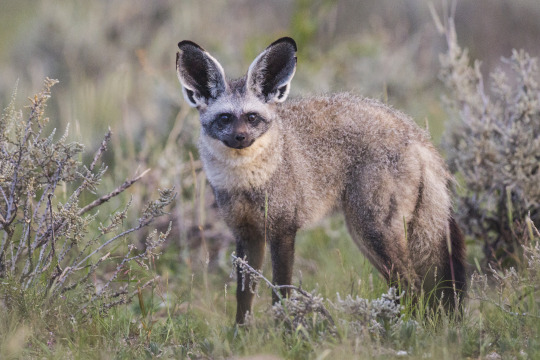
So, initially, I wrote off these guys cause I wasn't counting foxes, but I gave in. The chestnut wolves don't look like much of any existing canines, and nothing that lives in taiga forest. So, bat eared foxes are my best guess. They're small canids native to southern Africa, and are part of the subfamily Otocyoninae, which is a sister family to the families containing true foxes and racoon dogs.
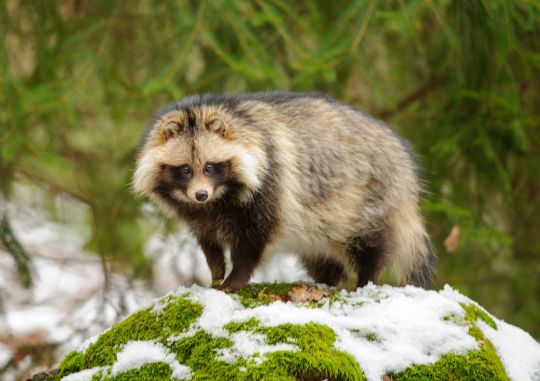
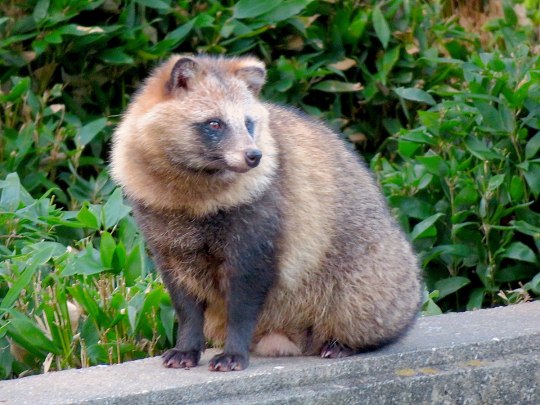
Speaking of raccoon dogs, they're my second best guess for the origin of the chestnut wolf. Their habitat makes slightly more sense, being from the forests of Japan and east Asia!
#i finally get to infodump on cool animals#also i learned A LOT researching for this!#minecraft#minecraft wolf#sharp has too many thoughts
28 notes
·
View notes
Text
1st of October 2024: Least Horseshoe Bat

October has officially begun, and what better way to start than with a bat, specifically the Least Horseshoe Bat (Rhinolophus pusillus). They are one of the smallest horseshoe bats in the world [1], having a body length of only 3-4 cm [2], and are mostly from South East Asia [3].
Their species actually encapsulates many different populations including those who used to be believed to be different species, such as R. monoceros in Taiwan or R. cornutus in the main islands of Japan. They are also morphologically (as in shape-wise) similar to R. hipposideros in Europe, but unlike for the other ones, this is more likely to be convergent evolution, as opposed to coming from close genetic lineages [4].
They are insectivores, mostly feeding on flies and moths [5]. They’re from moist forests, and are in their largest flocks in caves, with groupings of up to 1500 Least Horseshoe Bats having been recorded roosting together. They may also be found in houses, though in that case obviously in smaller groups [3].
They do hibernate, with their hormonal production switching around to give them higher resistances to viruses, which bats in particular require. The exact changes may be as specific as to vary with only 5°C differences in different microclimates, depending on whether they are hibernating in a mine or in a canal [6]. Their echolocation calls also vary with climate, with those populations living in areas with heavier rainfall having higher pitched calls [1].
Sources: [1] [2] [3] [4] [5] [6] [Image]
#critter of the day#critteroftheday#bat#small mammal#small mammals#bat species#horseshoe bat#animal facts#animal#zoology#animal species
4 notes
·
View notes
Note
Look i had a vision, i hope you get what im saying im kinda shit with grammar😭
Heres my rundown: (mild context) reader's originally from an area (cough cough south east asia, honestly if you dont mention it its fine) where it literally never snows. Reader just turned uni age ( like 20?21?) , and from her yesrs of vigilante-ing she meets superman, who recommends she apply to a university in bludhaven, citing that they have 'good heroes to learn from' so reader does just that and meets dick grayson.
Ok the actual plot is here now: readera dm grayson are on a christmas mission together (they stsrted working together) and they kinda get trapped in this cabin as a sudden snowstorm hits and kills nightwing's com line with the bats. Now, because reader's costume was built for moonsoon weather not snowy weather, she's cold as hell. Cue cuddle session.
Honestly thats all i got, take it however you wish i look forward to seeing it!
Here you go! Sorry its not really Christmas themed, but it is cozy ^_^
2 notes
·
View notes
Text
Miracle Boxes - The True Generation
These are the second iteration of the Miracle Boxes, and the generation that lasted the longest, stretching out for several thousand years. The Miraculouses within these boxes are very similar to the generation before, save for many kwamis of the Mage Box being divided out among the other boxes of the world, and the Mage Box being hidden away as the Secret Box.
During this time kwamis were free to chose their own holders, and spent more time out in the world than in their Miracle Boxes. Guardians were protectors of kwamis in their dormant state, but were not wardens of them. Kwamis would often travel far from their boxes and across the world, acting as protectors where they felt they were needed.
---
Secret Box - Hidden Panda Crow Unicorn
Successor Box - Central Asia Ladybug Black Cat Qilin Frog Bee Butterfly Fox Peacock Swan Turtle
Island Box - Oceania Wolf Platypus Pterosaur Tuatara Binturong Blackbuck Coral Kangaroo Komodo Thylacine
Zodiac Box - East Asia Dragon Cobra Rabbit Dog Goat Horse Monkey Mouse Ox Pig Rooster Tiger
Perennial Box - North America Thunderbird Bear Beaver Cougar Deer Goose Otter Owl Rattlesnake Raven Salmon Woodpecker
Central Box - Central America Firefly Raccoon Feathered Serpent Spider Axolotl Bison Coyote Eagle Falcon Parrot Shark
Tropical Box - South America Grim Snail Anglerfish Crocodile Dolphin Jaguar Jellyfish Llama Locust Moth
Jungle Box - Southern Africa Dinosaur Penguin Elephant Gorilla Okapi Jackal Ray Rhinoceros Squirrel Zebra
Desert Box - Northern Africa Griffin Dragonfly Camel Chameleon Cheetah Giraffe Hippopotamus Hyena Ostrich Secretarybird
Constellation Box - Southern Europe Kelpie Aurochs Ant Crab Dove Gecko Hedgehog Ibex Lion Mouflon Scorpion Seahorse
Arctic Box - Northern Europe Phoenix Lynx Moose Narwhal Octopus Polar Bear Seal Sheep Weasel Wolverine
Mountain Box - South Asia Yeti Red Panda Bat Elk Pangolin Quail Scarab Snow Leopard Tortoise Vulture
---
The True Generation came to an end with the start of the Miraculous War, with the rise of what became known as the Order of the Guardians.
---
The Mage Generation of Miracle Boxes
The Order Generation of Miracle Boxes
#kwamis#kwami oc#kwami#oc kwami#vitaa#plagg#tikki#shii#miraculous headcanon#miraculous headcanons#ml headcanons#my headcanons#miracle box#miraculous boxes#not too much different in terms of who's in what box#but there will be a lot of changes with the order generation
18 notes
·
View notes
Text
Literal Baby

#Black Flying Fox Pup#Bats of Indonesia#Bats of South east Asia#Baby Bat#Bat#bats#batposting#Cute bats#cute animals#Bat of the day#Daily Bat#I mean look at them#Literal#actual Baby#ACTUALLY a baby bat
385 notes
·
View notes
Text
Day 2 of spooky season! Today, we have Tacca chantrieri, also known as the bat flower or the devil flower! It's quite a rare and very stunning flower, since it's one of few black flowers!
The plant grows at most a metre tall, and the flower itself spreads out roughly 12 inches across! The bracts, which is the fancy name for a specialised leaf, typically for reproductive purposes, are shaped like big wings, like a bats! It also has bracteoles, small versions of bracts, that looks like whiskers!
The colours of the flower do vary, sometimes being dark brown, purple or even green, but all help to decieve pollinators! It's evolved to look like a carrion mimic, like the corpse flower, but Tacca chantrieri doesn't bother with the smell, just visuals! Flies fly into the flower, find out there's nothing deeper inside it, and struggle to crawl back out until the flower feels sufficiently pollinated!
The bat flower is a plant native to Asia, specifically south east Asia, spreading across Vietnam, south china, Cambodia, Bangladesh, and a few others! It likes a lot of heat and moisture as a result! Unfortunately, the territory it grows in, in the wild, is shrinking, mainly because of overexploitation, habitat destruction, and forest fragmentation, which is where chunks of forest are removed in irregular and unnatural patterns by humans!
Overall, Tacca chantrieri, or the bat flower or devil flower is a very unique plant, with distinctive colours and shape! If you liked learning about it, please like, comment, reblog and follow my page! Without further delay, here it is!

3 notes
·
View notes
Text
i really. need to get on the tellius games at some point but right off the bat from just skimming through it
this is the weirdest mix bag of stuff. i mean theres pretty explicit sanskrit/hindu stuff in there right next to shinto buddhism. micaiah is a miko in JP bc the lil bird god is literally split into a raging god and a chill god exactly like what goes on in shinto
and she is a miko who attends to one side and calms that mitama down and then avoids sending the world into further chaos and bad stuff
aside from that theres also names of the other dragon characters (? ig?) that have clearly sanskrit-ish names. theres a lady named amrita in JP which is as explicit as it gets
but then theres soren whose name structure sounds exactly like how mandarin names are expected to sound. amazingly he lacks a family name in this structure too. fuck yeah
so the line of India -> China -> Japan mythos is clearly present here. also the laguz(?) have elements of south east asia (esp pre colonization ig) all over it.
fascinating. what are they smoking in intsys
1 note
·
View note
Note
Pipistrelle looks like a kiwi fruit with bat wings glued onto it. I love them. Friend shaped
Do you have any fun facts about it?
They really do lol. And you know I have fun facts about my favourite bat!!!!!!
Common Pipis have a very large range. Most of Europe, North Africa, South Asia, and maybe even a little further east! It's the most common bat in the UK, where I live, and most of Europe too I think. I specify that my favourite are Common Pipis, because there are quite a lot of Pipi species! One of the more notable ones is the Soprano Pipistrelle, because it was reclassified to be distinct from the Common Pipi very recently, in 1999! They have a slightly different range (the Soprano's is smaller), and the Sopranos echolocate at a higher frequency to Common Pipis! The two species can hybridise though.
Common Pipis are also absolutely tiny. Their wingspan is 18-25cm, and their body is 3.5-5.2 cm.

Just look at it compared to this person's fingers. Minuscule.
They also have very erratic flight patterns, they're all over the place, so easy to identify if you see one flit by.
I hope that's enough Pipi facts!! As much as I love them they aren't the most unusual bat, but delightful in their normalcy. Also every bat is incredible and special and must be cherished.
#definitley on the el wiwi and ouppy end of the bat scale#another reason they're some of my favourites is just because I've seen quite a few of them with my own eyes#and you can't help but come to love the native animals you see around you no matter how regular they are#I can't help it anyway#ask#anon
5 notes
·
View notes
Text
Ok I'm going to assume that this was said out of ignorance rather than malice so here's a few reasons why this is extremely racist and not to mention completely inaccurate.
right off the bat the idea that Australia was isolated for 11k years is wrong. People have (and still do) lived in the Torres strait (a string of islands between Australia and South east Asia) for 10s of thousands of years and likely had continued contact between people in Papua New Guinea and Australia in the past 11k years. People have been using boats for a long time and peoples like the polynesians have been travelling across large oceans long before modern colonisation.
Even if they had been isolated 11k years is not a long time in the scheme of evolution. Homosapiens have been around for a few hundred thousand years and 11k isn't going to make a dramatic difference.
Ultimately those points are irrelevant when you consider that using genetics to decide whether a group of people is human just straight up eugenics. The idea that certain ethnic groups are less human or less evolved is deeply based in the type of colonial racism that was used as an excuse to murder, rob, and oppress Aboriginals even to this day. You would be asking are Europeans still human because they have some neanderthal DNA.

Jesus fucking Christ
6K notes
·
View notes
Text
Discovering the Beauty of Laos: A Traveler's Journey
Today you will learn about the beautiful places in Laos, delicious food, and some favorite trips that will make you want to come here too.

Round the year we are looking at many new places and countries to visit, which will give us something new, exciting and a good experience. In true sense, some places give happiness and relaxation in our life. If I tell you about a new place, where you will have to not think about this. Laos, you must have heard this name if you haven't heard it. Now you will definitely hear about it and will also know about this place, it is a unique combination of beauty and nature. Situated in the south-east of Asia, this country attracts people from all over the world for its unique places. We also did not know about it, but now we will know.
Travelers, now be careful and cautious, because now you will get a chance to see even more exciting places this year.
Laos is a hidden gem that is yet to be discovered. Travelers discover something new here every time. Surrounded by its serene landscapes, rich cultural heritage, the country offers a mix of experiences for every traveler. From lush forests and ancient temples to markets and river banks, Laos has a charm that captivates you.
Before moving forward, I would definitely like to tell you that, for travel enthusiasts like me, in this blog, I have shared that part of myself with you, which you will also feel good thinking about.
Along with this, there are some things about Laos that you should know before going there.
So that you can easily make up your mind to go here.
Journey of Laos beauty
I had a wonderful trip to Laos. The natural beauty of the place will truly amaze you, along with the relaxing atmosphere here, which helped us a lot in traveling and getting to know Laos closely.

The lush green trees, wild animals, the chirping of birds flying will be entertaining to you. It seems as if all these are welcoming you together.

The Bare-faced Bulbul is known from the limestone karst area near Pha Lom in central Laos. It is one of the most beautiful birds.
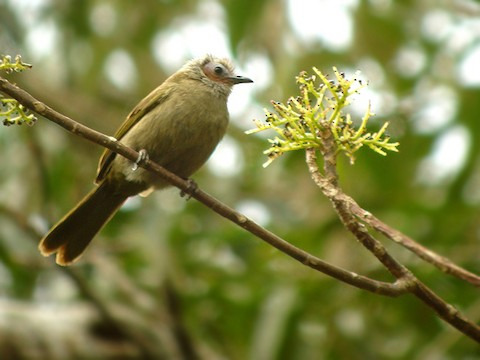
Laos is like a paradise for nature lovers. Here you will find an untold adventure even in the jungles.
Natural Wonders of Laos
Natural beauty is enough to give a unique look to any place, whether it is a pond, river, or waterfall. There is something here for you too, which will force you to get lost in this place.
Kuang Si Falls
Kuang Si Falls, located near Luang Prabang, is a waterfall where you will get to see breathtaking views with turquoise pools, that place inviting visitors to swim and relax.

Peoples enjoy in waterfalls
Bolaven Plateau
The Bolaven Plateau in southern Laos is another highlight, known for its coffee plantations, waterfalls, and cool climate.

Si Phan Don
The Mekong River, which flows through the heart of the country, is a lifeline for locals and a hub for activities. Travelers can take a leisurely boat ride to explore the 4,000 Islands, or Si Phan Don, where life slows down even further. As you explore Laos places to visit, these islands offer a unique charm, with opportunities for cycling, kayaking, or simply enjoying the mesmerizing sunsets over the river. Whether you're seeking tranquility or adventure, exploring the laid-back islands of Laos is an experience not to be missed.

A Glimpse into Lao Culture
Often called Southeast Asia's most peaceful country, Laos has a calm atmosphere that calms the emotions of its people and there is a reason behind this. The pace of life is slow and peaceful, allowing visitors to immerse themselves in the local culture. The country has Christian, Muslim and Buddhist heritage which is deeply embedded in everyday life. You will see saffron-robed monks roaming the streets early in the morning, collecting alms from devotees. This daily ritual, known as Tak Bat, is a humbling experience that gives an insight into the spiritual fabric of Laos.

The culture here is similar to Indian culture, such as traditions, religious customs, which people teach their children. Here we saw people having very large families, in which people of 3 generations live and work together. You will find farming everywhere here because people here depend on farming to earn their living. Elephant is known as a sacred animal among the people of Laos. There are more than 90 languages spoken by different ethnic groups in Laos. English, which is important for business and tourism language here, is being adopted rapidly, and it is replacing French among the younger generations as an informal second language.

One of the must-visit cities is Luang Prabang, a UNESCO World Heritage site. With its blend of French colonial architecture, golden Buddhist temples, and vibrant night markets, Luang Prabang is a perfect representation of Laos' cultural fusion.

Don’t miss a visit to the Royal Palace Museum and Wat Xieng Thong, a temple that showcases intricate carvings and stunning mosaics.


Savoring Lao Cuisine
No trip to Laos is complete without indulging in its delicious cuisine. Sticky rice, or “khao niao,” is a staple and is often paired with dishes like laap (a flavorful minced meat salad) and tam mak hoong (green papaya salad).
Sticky Rice

Laap (flavorful minced meat salad)

Tam Mak Hoong

And if you are a street food enthusiast, you will love snacks like grilled skewers, crispy spring rolls and coconut pancakes. For a great experience, try dining at one of the riverside restaurants, where you can enjoy fresh fish while enjoying beautiful views.
Grilled Skewers

Crispy Spring Rolls
Coconut Pancakes
Adventurous Escapes
If you're seeking an adrenaline rush, Vang Vieng is the place to be. Once infamous for its wild party scene, this riverside town has reinvented itself as an adventure hotspot.

From hot air balloon rides to fun-filled memories, you will create them here with your friends.

From zip-lining to tubing down the Song River and exploring limestone caves, you’ll be thrilled.

For a different experience, you can head to a Nam Ha National protected area. This vast wilderness in northern Laos is ideal for trekking, wildlife watching and learning about the traditional lifeways of the ethnic minority groups that call this region home.

Practical Tips for Traveling in Laos
Best Time to Visit: The cool, dry season from November to February is ideal for exploring.
Currency: The local currency is the Lao Kip (LAK), but US dollars and Thai Baht are widely accepted in tourist areas.
Getting Around: Tuk-tuks, songthaews, and rented bicycles or motorbikes are common modes of transport.
Respect Local Customs: Dress modestly, especially when visiting temples, and always remove your shoes before entering.
Conclusion
Laos is a destination that offers a perfect blend of adventure, relaxation, and cultural immersion. Whether you're exploring the ancient streets of Luang Prabang, chasing waterfalls in the countryside, or savoring the flavors of Lao cuisine, this enchanting country promises unforgettable memories. So pack your bags and set out to discover the beauty of Laos — a journey that will leave you longing for more.
0 notes